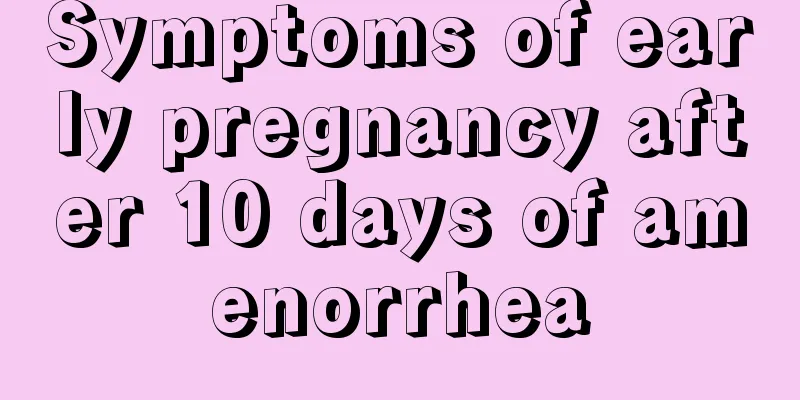When is the right time to do follicle testing?

|
When doing follicle monitoring, women must choose the right time. Generally, the test can be started on the eighth day after menstruation, and the information can be obtained through B-ultrasound, because this method is more accurate and can determine the development and ovulation of follicles. 1. When is the best time to do follicle monitoring? 1. For women with normal menstrual cycles, they can be tested starting from the eighth day of menstruation. B-ultrasound is the most common and most accurate detection method. In order to understand the entire ovulation process, continuous detection is required and it cannot be interrupted or stopped at will. 2. However, the menstrual cycle of many female friends is not fixed. Sometimes the menstrual period will be prolonged, and the specific ovulation date is unknown. So when is the best time to do follicle monitoring? At this time, you can start testing from the third day of menstruation, and the results will be more accurate. In addition to knowing when is the best time to do follicle monitoring, you also need to do the test every two days. When the follicles are mature and about to ovulate, you can change to testing once a day. 3. By detecting ovulation, you can find out the specific ovulation date so that you can prepare for conception. Moreover, when encountering ovulation problems, the specific causes can be further checked. Whether it is follicular hypoplasia or follicular atrophy, it needs to be treated as soon as possible, otherwise it will cause women to be unable to reproduce normally. Wonderful reading: Preparing for a second child by doing a good job of follicle monitoring to improve pregnancy rate 2. What are the precautions for follicle monitoring? 1. Follicle monitoring combined with basal body temperature testing can more accurately determine follicle development, ovulation and corpus luteum function. 2. When monitoring follicles, you cannot stop monitoring as soon as you see a dominant follicle or a mature follicle. You should continue monitoring until ovulation is confirmed or the follicle is hypoplastic or luteinized. Further reading: How big a follicle is considered a dominant follicle Reason: Because the underdeveloped dominant follicles may gradually shrink and become smaller; while some follicles will continue to grow to more than 30-40mm and cannot be discharged, resulting in ovulation disorders. The follicles age in the ovaries and become luteinized. At this time, B-ultrasound can indicate the appearance of reticular flocculent echoes and strong light spots in the follicles. At this time, the basal body temperature may have risen. 3. Some people who use clomiphene to induce ovulation should start follicle monitoring the next day after taking the medicine; some people with poor ovarian function have no response or slow response to clomiphene, so they should pay attention when monitoring follicles. |
<<: Pregnant women have small fleshy bumps on their necks, which may be filiform warts
>>: What are the symptoms of fertilized egg implantation?
Recommend
Qimai Research Institute: Top App Rankings in April 2021
Recently, Qimai Data released the popular applica...
What causes ovarian rupture?
The uterus and ovaries are an important part of t...
Can I take probiotics while breastfeeding?
People with long-term constipation habits can tak...
Herpes virus infection on nipples
Herpes is very harmful to women's bodies. Wom...
Pregnancy lying flat belly hard
Pregnant women with babies should pay attention t...
How long does chest pain last in early pregnancy?
Many friends do not know that breast pain will oc...
Is breast reduction surgery effective?
Many people go for breast augmentation surgery, b...
How much can you eat during your period without getting fat? 5 common misconceptions about menstruation that many people have fallen into
When it comes to health knowledge that women must...
Is it normal to have less fetal movement at 36 weeks?
Fetal movement is an important sign to detect whe...
What are the food taboos for vaginitis
The problem of vaginitis is a type of female gyne...
Female reproductive organs anatomy
Every year, 200,000 women die from gynecological ...
What is the most effective medicine for adenomyosis?
Adenomyosis is a common gynecological disease, wh...
What kind of underwear is good for breast enhancement?
A woman’s good figure is not just about height or...
What is white lochia?
The color of postpartum lochia will change to a c...
Changsha Fourth Hospital reminds: Although chestnuts are good, don’t eat too much, be careful of intestinal blockage!
In the autumn and winter seasons, chestnuts have ...









